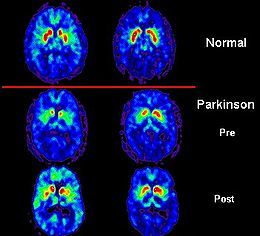A new study that relied on data from more than four million 23andMe customers, may help speed efforts now underway to find drug targets for treating Parkinson’s disease.
 Working with researchers at 23andMe, scientists at the Broad Institute of MIT and Harvard, were able to identify a very rare group of individuals who have what are called “loss of function” alleles in the gene LRRK2. These 1,400 individuals also do not appear any more or less healthy than those without the loss of function alleles, even though the alleles have essentially turned off the function of one of their LRRK2 genes.
Working with researchers at 23andMe, scientists at the Broad Institute of MIT and Harvard, were able to identify a very rare group of individuals who have what are called “loss of function” alleles in the gene LRRK2. These 1,400 individuals also do not appear any more or less healthy than those without the loss of function alleles, even though the alleles have essentially turned off the function of one of their LRRK2 genes.
This finding, published in the journal Nature Medicine, gives drug hunters looking for new treatments more evidence that they may be able to safely target that gene, which is the most common genetic cause for Parkinson’s.
Collaborating and Leveraging Data
The paper was one of seven published by the researchers using data from Broad’s Genome Aggregation Database (gnomAD), which brings together exome and sequence data from many sources for researchers. Leveraging that data, the researchers looked not just at Parkinson’s disease, but also developed a catalog of human variation, insights into population genetics, disease association, and diagnostic screening.
A grant from the Michael J. Fox Foundation helped pay for the work on the LRRK2 paper, which included essential contributions from scientists at Imperial College London, and the Icahn School of Medicine at Mount Sinai. The study also included data from the UK Biobank and Broad’s gnomAD.
“The study is another illustration of the immense value of 23andMe’s data,” said Paul Cannon Ph.D., 23andMe’s Parkinson’s disease research manager. “Having this very large genetically and phenotypically characterized cohort offers novel opportunities to look for evidence of any potential safety concerns for drugs for targets like these, which individuals at risk of developing Parkinson’s, may end up taking chronically, perhaps for decades .”
Looking at LRRK2
As part of their work, the researchers were also able to confirm many known loss of function variants in the LRRK2 gene, which are extremely rare. But the researchers also found that about 1,400 individuals in the 23andMe database carried one of three loss of function variants. The 23andMe data includes extensive health as well as other phenotypic information. This allowed researchers to determine that those individuals did not appear to be suffering health effects from that loss of function.
In most cases, the cause of Parkinson’s disease is unknown. There is a complex mix of genetic and environmental factors at play that lead to the development of the disease. But in the last decade, researchers have identified variants in a handful of genes, including LRRK2, associated with developing Parkinson’s disease. In the case of LRRK2 a variant in the gene is associated with the overproduction of certain proteins in the brain. Scientists have long believed that one avenue for treating the disease may lie in modifying, or “down-regulating” the function of the LRRK2 gene. Still, they want to better understand whether that can be done safely.
“These results suggest that drugs that reduce LRRK2 kinase activity are unlikely to show toxicity due to on-target effects,” the researchers state in the paper.




